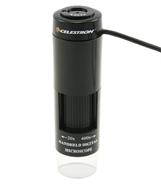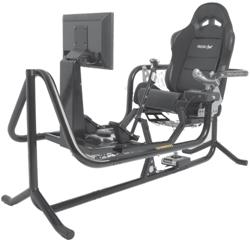CES 2008, by Fred Thorlin
With only 140,000 people attending the 2008 Consumer Electronics Show, CES, it was almost intimate allowing almost 10 square feet per attendee before accommodating the exhibits. This did not inhibit the overall rate of innovation. If there was a theme to this show, it was Guitar Hero. Bill Gates strummed himself off the stage ending his run of CES keynotes and confirming his retirement this summer. He is the Henry Ford of personal computer software; his leadership and insights will be missed. During his presentation Bill showed some new applications of the Microsoft Surface technology by placing an order for a customized snowboard. Other applications demonstrated included animated puzzle parts, entertainment selection and food ordering.
On one side of Microsoft’s sprawling booth was the Microsoft Robotics Studio. This group is developing a software robotics platform to support and encourage the development robotic applications. Several users demonstrated their robots. The software is available for free from Microsoft.
Video
Samsung home theatre systems, aka TVs, now have 5.1 sound, Bluetooth, USB ports and internet ports. The prospect of what this is leading up to boggles the mind.

Pioneer got an Innovations award for their $6,000 Elite KURO Pro-110FD 50" plasma system. As a demo they took attendees into a small theatre with three of these running; we could just make out the screen edges. They then turned on their R&D model and there were no edges to be seen, i.e. perfect black. Wow! Another impressive technology demonstration they put on was the display of a 50” screen that is 9mm thick; you know most of the thickness was just for mechanical support of the screen. A smaller pod on the back of the screen contained the support electronics. The picture at left is an edge view of the screen. Guess what is coming. Panasonic showed a 150” screen! There were quite a few entrants in the extreme screen contest. Each contender had a problem in coming up with content capable of showing off their screen’s capabilities.
The Picture
The real fun was in the camera offerings by Casio. Their four new EXILM pocket models introduce some curious and fun features. In addition to their image stabilizer technology their AutoShutter function picks the moment when the action pauses to take the picture. I used it to take a picture of the crowd milling about their booth and the results were amazing; it was like everybody froze. I can’t believe it can be that effective every time but I was impressed. Another feature is the smile detector: press the button and the moment your subject slips up and smiles the shutter clicks. Another mode detects the moment you are moving synchronously with your subject to take the picture, e.g. a car driving by. It looks like magic.
But there is more. The top end of the EXILM line, the EX-F1, isn’t a pocket model. The pictures are six megapixels, the zoom is 12X and it has all of the above mentioned features. Good, but there is more. Sixty six megapixels shots per second! That is over a gigabyte of data being moved around each second! There are some features that help you pick your second well. If you just want a movie, you can record that at 1,200 frames per second! You should visit their website to see just what you can capture at those speeds. The price of the EX-F1 is set at $999 and it will be available this spring (think April).
  Have you ever tried to extract from a photo a head with messed up hair or intricate vegetation? Cutting and pasting those objects onto a different background is an exercise in frustration and the results are generally disappointing. Vertus’ fluid mask 3 PhotoShop plug-in solves the problem in a powerful way that produces results you can be proud of. If it seems too good to be true there is a 30-day free trial download so you can confirm it for yourself. Have you ever tried to extract from a photo a head with messed up hair or intricate vegetation? Cutting and pasting those objects onto a different background is an exercise in frustration and the results are generally disappointing. Vertus’ fluid mask 3 PhotoShop plug-in solves the problem in a powerful way that produces results you can be proud of. If it seems too good to be true there is a 30-day free trial download so you can confirm it for yourself.
 Celestron has expanded on last year’s SkyScout by integrating it with other equipment in their product line. Point the SkyScout to the sky and it identifies what you are looking at. Now it can identify what your telescope is pointed towards. Alternately it can control your telescope, pointing it to the object of interest. Celestron has added LCD digital displays to their telescopes and microscopes. Another interesting product is their handheld microscope that connects to your computer via USB. The microscope has an integrated illuminator eliminating all of the lighting problems we have all had when trying to use a web camera to find splinters in our feet. 20x and 400x magnification are available with this 35mm diameter scope. Celestron has expanded on last year’s SkyScout by integrating it with other equipment in their product line. Point the SkyScout to the sky and it identifies what you are looking at. Now it can identify what your telescope is pointed towards. Alternately it can control your telescope, pointing it to the object of interest. Celestron has added LCD digital displays to their telescopes and microscopes. Another interesting product is their handheld microscope that connects to your computer via USB. The microscope has an integrated illuminator eliminating all of the lighting problems we have all had when trying to use a web camera to find splinters in our feet. 20x and 400x magnification are available with this 35mm diameter scope.
At the low price end of cameras I liked the Liquid Image underwater camera. The camera is incorporated directly into a face mask and sealed for use at depths up to one hundred feet so it should work for snorkelers and SCUBA divers for available light snapshots. The components are distributed around the mask. The mask is the viewfinder. The images, still or movie, are recorded onto an SD card which is easily replaced when full and loaded into a computer for viewing and editing. Three and five megapixel models are expected to be available for under $100 in March.
GPS – Global Positioning Systems
A nexus of cameras and GPSs appeared at the show. For over a year Sony has been offering their $150 GPS-CS-1KA for adding geographic coordinates to images with the use of a computer. This year it looks like ATP got it right. For only $99 their Photo Finder will add the geographic data to each of the photos on your camera’s SD card without the need for a computer. At the start of your filming day synchronize your camera’s clock to the Photo Finder’s clock. Next, hang the Photo Finder from your belt and start shooting pictures with your SD card camera. At the end of the day take the SD card(s) from your camera and insert it into the Photo Finder. It will insert the location information for each image. When you get home upload your geotagged photos to Google Picasa and a Google Earth map with the photo appropriately located is produced. Wow!
Where did you park your car? IDC came up with a great idea with their Intelligent Digital Compass. The display of this GPS on a key chain consists of an arrow. If you set it when you park your car outdoors, the arrow will always point back to the car.
Sound
MAGIX has a different music manager. The Mufin Musicfinder Base does all of the stuff you expect to find in a mp3 player from indexing your music, to creating playlists, to selling you new tracks. However there are several features that set it apart. It fingerprints your music files! Using these fingerprints it can correct or complete the tag information in your sound files. It can produce a map of your music files indicating the tracks you play most and the areas of music not represented in your music collection. And if you are really into music there is a social networking feature built around music. You can get in on the beta for free now.
Memory
I could have lost my memory in my shirt pocket. SanDisk showed a 12 GB microSDHC cards; those are the really little memory cards than fit on a penny. They also promoted a 72 GB solid state replacement for notebook disk drives; a bit of power and weight can be saved by using them. 16 GB USB memory plugs are being sampled.
Toys
The Innovations Awards included two flight simulators: D-Box’s GP-PRO-200 FS, for about $14,000, and the Dreamflyer, for $2,800 to $3,100. Each requires the user provide computers and displays. For cost effectiveness I was impressed by the Dreamflyer. I flew the single screen (cheaper) version and was completely absorbed. I have a clear memory of plunging and climbing even though the system is objectively incapable of that. It certainly rolled my 270 pound frame around quite smoothly.

For smaller pilots Andy’s Airplanes will be offering a flight simulator for kids. The idea is to use a simplified flight simulator environment to teach geography. Look for developments at their website.
Floor Notes
- Palm did not exhibit for the first time in years.
- Double sided printing is appearing in several home office printers.
- ZINK is promoting an inkless color printing paper.
- Lumus will ship a see-thru video headset for about $200 in March.
- Zalman, Thermaltake and CoolerMaster each said that liquid cooling is not growing as rapidly as expected, however each is coming out integrated liquid cooling cases by June.
- Dreamcheeky has a bizarre collection of fun things to plug into your USB port.
- LG got an award for their steam dryer. Steam dryer?
- Microsoft got an award for their 1 GB memory mouse…??
- NeverDie is a massively multiplayer intergalactic game trading with real money. It is migrating to the Crytek engine which produces impressive environments.
I keep hearing that the really neat stuff is migrating to more specialized shows. You could fool me; it looked like another great year for new products at CES.
|

